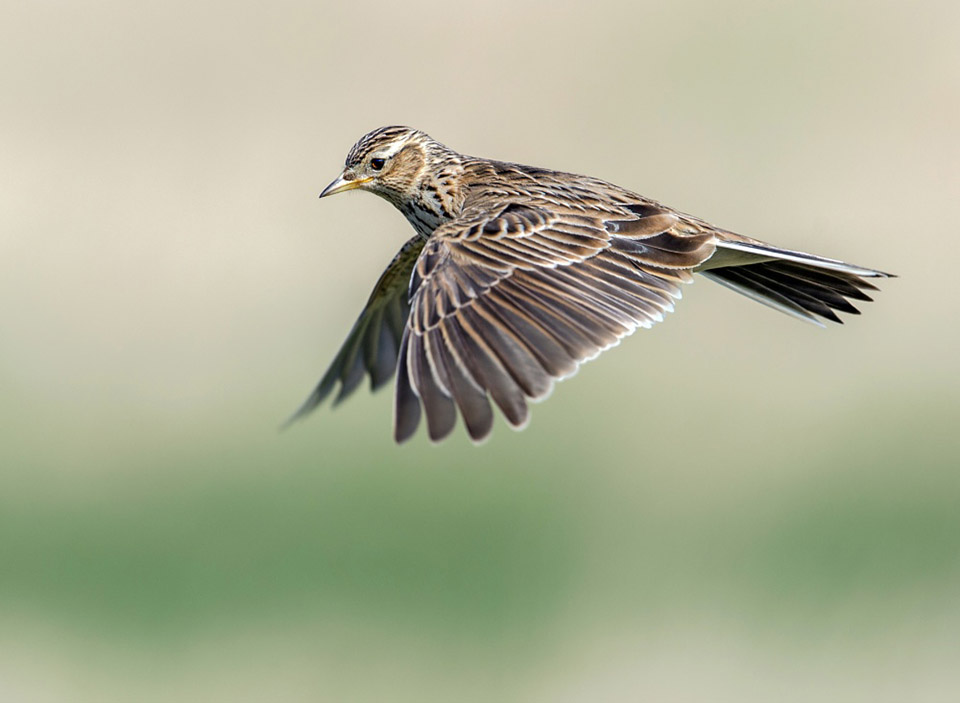Despite the ornithological theme, I must admit that I’m not much good at recognizing birds, even though my father could spot a Great Crested Grebe at two hundred yards. Quite frankly I couldn’t recognize a Great Crested Grebe if you hit me over the head with a stuffed one. I can manage owls, seagulls and swans but that’s about it. And since I have been living in Thailand, I can now recognise nok graboot yai, known to bird experts as the Greater Coucal and the nok gawow which is also known as the Asian Koel. But I still have no idea about larks. I suppose I might recognise a lark given a helpful clue, such as “This is a lark”.
In Greek mythology the lark represented the break of day; an association that has continued until the present. In the 14th century, Geoffrey Chaucer describes “the busy lark, messenger of day” in his iconic work, The Canterbury Tales. In one of his sonnets Shakespeare wrote “the lark at break of day arising, from sullen earth sings hymns at heaven’s gate”. I didn’t realise until yesterday that larks are kept as pets in China. In Beijing, larks are sometimes taught to mimic the calls of other songbirds or even animals. Apparently, some Chinese people teach their larks thirteen different sounds in a certain order and, presumably after a bit of practice, the bird is expected to repeat the sounds from memory in the correct order. I would have thought that could be a challenge for some humans.
Composers have used birdsong for centuries. I remember as a child being captivated by a harpsichord piece by the French Baroque composer Louis-Claude Daquin. It was called Le Cou-cou, which hardly needs translation. At various moments amid the Baroque tinkling, you hear the distinctive two-note cuckoo call. Frederick Delius used the same bird-call in his charming orchestral piece On Hearing the First Cuckoo in Spring, though unlike Daquin’s merry little soul, the one that Delius conjures up is melancholy indeed. Another French composer, Olivier Messiaen became fascinated with birdsong and used it in several works. The most notable perhaps is his 1952 piece for flute and piano entitled Le Merle Noir which featured transcriptions of the elaborate songs of the blackbird.
In more recent times, the Finnish composer Einojuhani Rautavaara used recorded birdsong in his 1977 work Cantus Arcticus, subtitled Concerto for Birds and Orchestra. And yes, since you asked, it also features the sound of larks.
Ralph Vaughan Williams (1872-1958): The Lark Ascending. Kerson Leong (vln) Camerata Nordica (Duration: 15:49; Video: 480p)
I came across this magical performance last week and even if you know the work, this splendid performance is likely to give you new insights. The music seems to epitomize summer and the landscapes of England. It could only have written by Vaughan Williams whose musical language is instantly recognizable.
In 1914 Vaughan Williams came across a poem by George Meredith, the English novelist and poet, whose friends included Dante Gabriel Rossetti, Robert Louis Stevenson, Sir Arthur Conan Doyle and J. M. Barrie, he of Peter Pan fame. Meredith’s poem The Lark Ascending held a particular fascination for Vaughan Williams who in 1914, wrote a piece of the same name for violin and piano which he orchestrated six years later. The title has a pleasing ring to it, which perhaps wouldn’t have been the case if Meredith had instead written a poem about the Little Bustard or the Fluffy-Backed Tit-Babbler. I’m not making this up you know: the Tit-Babbler is native to Indonesia, Malaysia and Thailand.

This is lyrical, evocative music in which the violin mimics the “silver chain of sound” that Meredith describes. The music soars into the highest register of the solo violin, just about as high as you can get. There’s a wonderful and compelling sense of place too. The work was written while Vaughan Williams was staying in Margate on the southeast coast in the early days of WW1. There’s a well-known story that as the composer was making notes for the work while walking near the sea, a small boy scout performed a citizen’s arrest, imagining that the composer was writing down “information for the enemy”. It’s a charming story though at the time, Vaughan Williams was evidently making notes for a lecture on Henry Purcell.
This performance is remarkable, thanks largely to the superb violin soloist, the Canadian Kerson Leong, born in Ottawa in 1997. He began to play the violin at age four and at the age thirteen won First Prize at the Yehudi Menuhin International Competition for Young Violinists which led to his first European debuts and the start of his solo career. He creates a remarkably rich and fluid tone quality and uses a fine Guarnerius instrument.
And do you know, just as I was finishing this column, our resident nok gawow began his forlorn hooting from a tree in the garden. Perhaps he was listening to the Vaughan Williams piece too.





